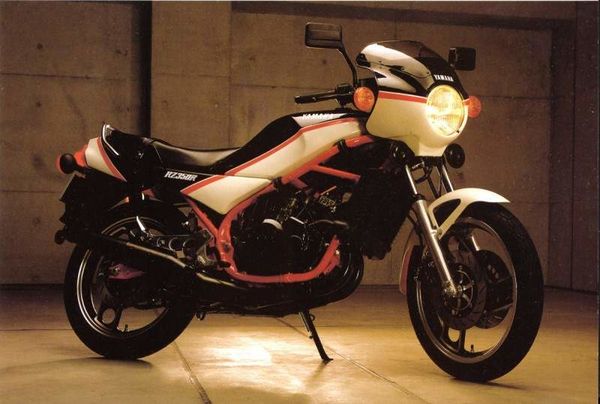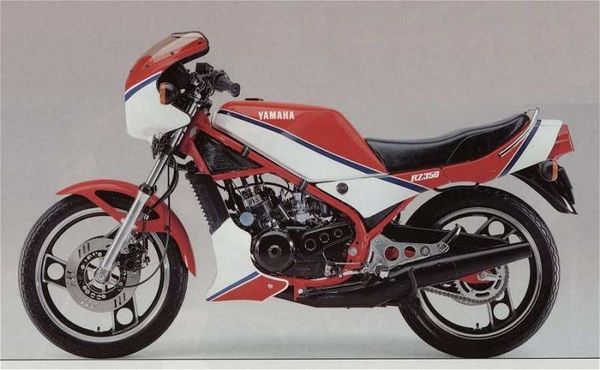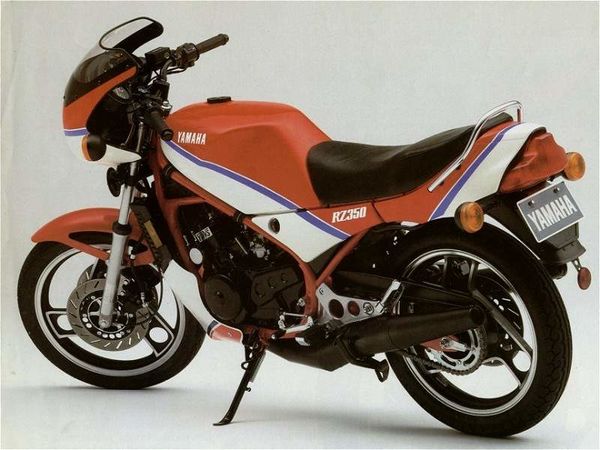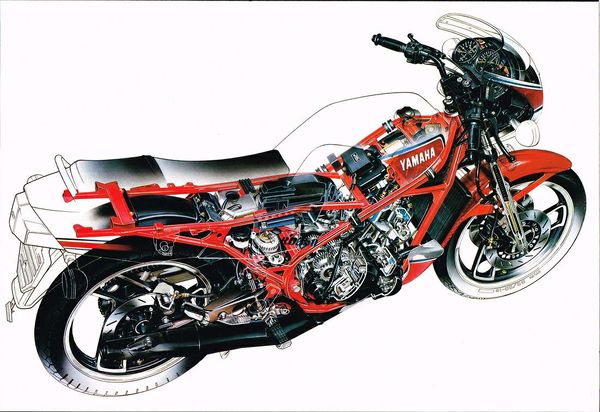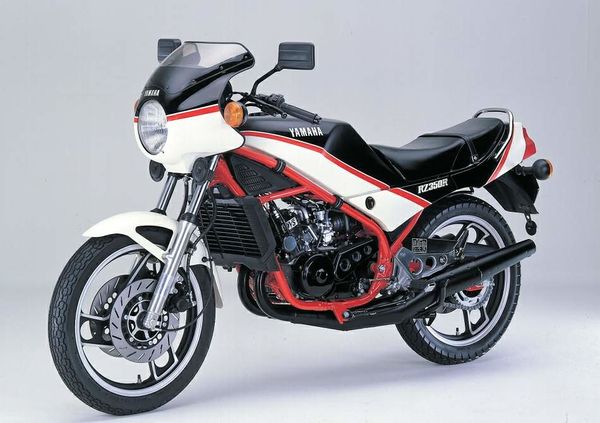Difference between revisions of "Yamaha RZ 350LC"
(adding recommended_oil) |
(has images) |
||
| Line 71: | Line 71: | ||
[[Category:Yamaha motorcycles]] | [[Category:Yamaha motorcycles]] | ||
[[Category:1980s motorcycles]] | [[Category:1980s motorcycles]] | ||
Revision as of 03:09, 19 November 2019
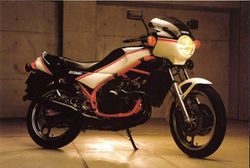 |
|
| 'Yamaha RZ 350LC' | |
| Manufacturer | [[Yamaha]] |
|---|---|
| Production | 1980 |
| Class | [[:Category:Classic motorcycles|Classic]] [[Category:Classic motorcycles]] |
| Engine | Parallel twin cylinder, two-stroke, liquid-cooled |
| Bore / Stroke | 63.5mm x 63.5mm |
| Compression ratio | 6.2:1 |
| Horsepower | 59.0 HP (44.0 KW) @ 9000RPM |
| Torque | 30.24 ft/lbs (41.0 Nm) @ 8000RPM |
| Transmission | Gear box: 6-Speed Final Drive: Chain |
| Suspension | Front: Stachion tube forks Rear: Single shock |
| Brakes | Front: Double discs 267 mm Rear: Drum |
| Front Tire | 3.00-18 |
| Rear Tire | 3.50-18 |
| Wheelbase | 53.7 inches (1364 mm) |
| Length | 81.89 inches (2080 mm) |
| Width | 29.49 inches (749 mm) |
| Seat Height | 30.91 inches (785 mm) |
| Weight | 149.0 kg (wet) |
| Recommended Oil | Yamalube 10w-40 |
| Manuals | Service Manual |
The Yamaha RZ 350LC was a Parallel twin cylinder, two-stroke, liquid-cooled Classic motorcycle produced by Yamaha in 1980. Max torque was 30.24 ft/lbs (41.0 Nm) @ 8000 RPM. Claimed horsepower was 59.0 HP (44.0 KW) @ 9000 RPM.
Engine
A 63.5mm bore x 63.5mm stroke result in a displacement of just 347.0 cubic centimeters.
Drive
The bike has a 6-Speed transmission. Power was moderated via the Wet multi-plate.
Chassis
It came with a 3.00-18 front tire and a 3.50-18 rear tire. Stopping was achieved via Double discs 267 mm in the front and a Drum in the rear. The front suspension was a Stachion tube forks while the rear was equipped with a Single shock. The wheelbase was 53.7 inches (1364 mm) long.
1980 - 1984 Yamaha RZ 350LC
The RZ 350LC had a variable exhaust port valve called the Yamaha Power Valve System (YPVS) that was controlled by a basic computer. The YPVS could open and close the valve to move the height of the exhaust port and thus affect the exhaust port timing.
